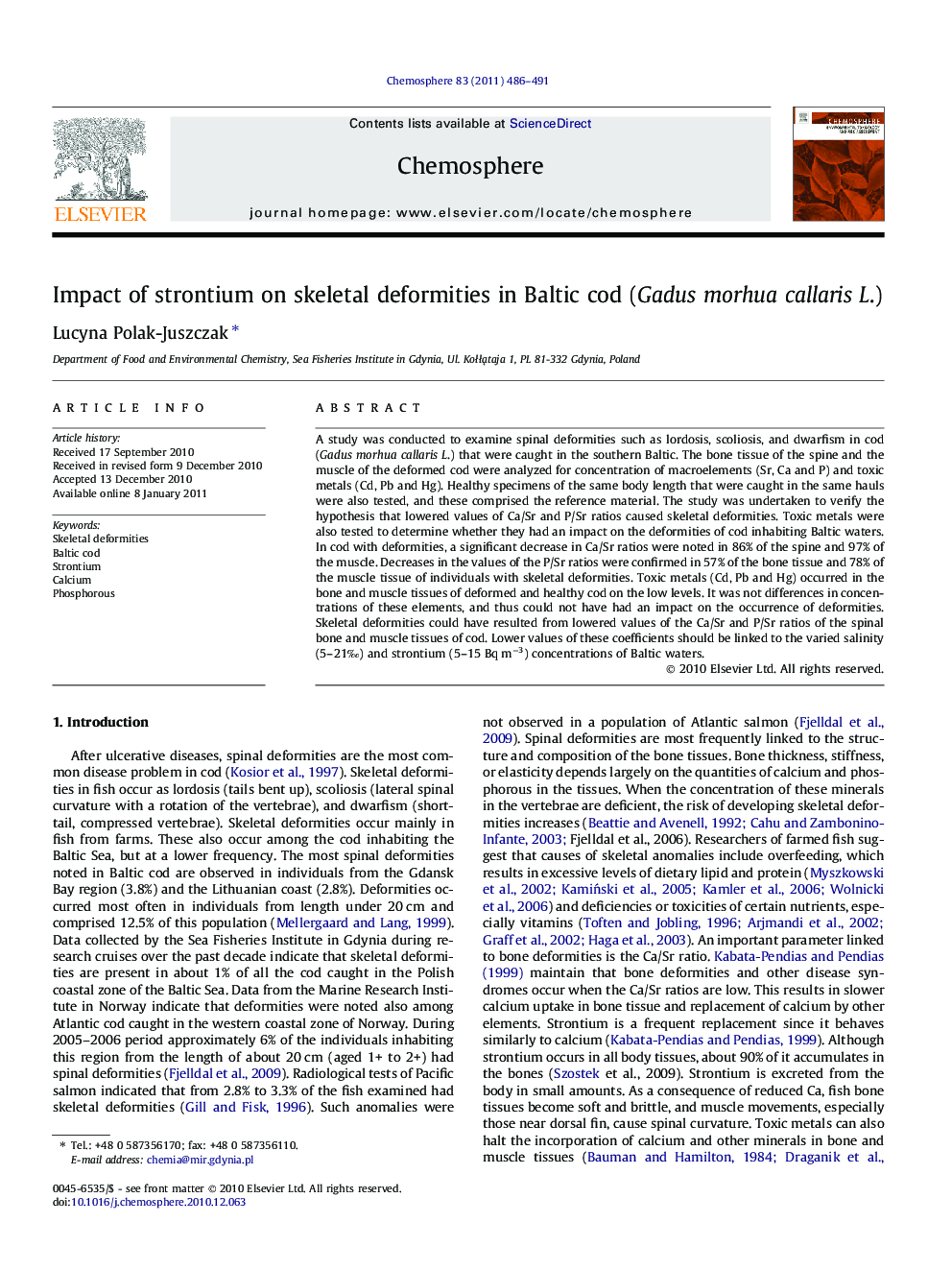| Article ID | Journal | Published Year | Pages | File Type |
|---|---|---|---|---|
| 4411070 | Chemosphere | 2011 | 6 Pages |
A study was conducted to examine spinal deformities such as lordosis, scoliosis, and dwarfism in cod (Gadus morhua callaris L.) that were caught in the southern Baltic. The bone tissue of the spine and the muscle of the deformed cod were analyzed for concentration of macroelements (Sr, Ca and P) and toxic metals (Cd, Pb and Hg). Healthy specimens of the same body length that were caught in the same hauls were also tested, and these comprised the reference material. The study was undertaken to verify the hypothesis that lowered values of Ca/Sr and P/Sr ratios caused skeletal deformities. Toxic metals were also tested to determine whether they had an impact on the deformities of cod inhabiting Baltic waters. In cod with deformities, a significant decrease in Ca/Sr ratios were noted in 86% of the spine and 97% of the muscle. Decreases in the values of the P/Sr ratios were confirmed in 57% of the bone tissue and 78% of the muscle tissue of individuals with skeletal deformities. Toxic metals (Cd, Pb and Hg) occurred in the bone and muscle tissues of deformed and healthy cod on the low levels. It was not differences in concentrations of these elements, and thus could not have had an impact on the occurrence of deformities. Skeletal deformities could have resulted from lowered values of the Ca/Sr and P/Sr ratios of the spinal bone and muscle tissues of cod. Lower values of these coefficients should be linked to the varied salinity (5–21‰) and strontium (5–15 Bq m−3) concentrations of Baltic waters.
Research highlights► Lower values of Ca/Sr and P/Sr ratios caused skeletal deformities in Baltic cod. ► Lower values of these ratios are associated with salinity in Baltic waters. ► Toxic metals such as Cd, Pb and Hg had not an impact on the occurrence of deformities.
